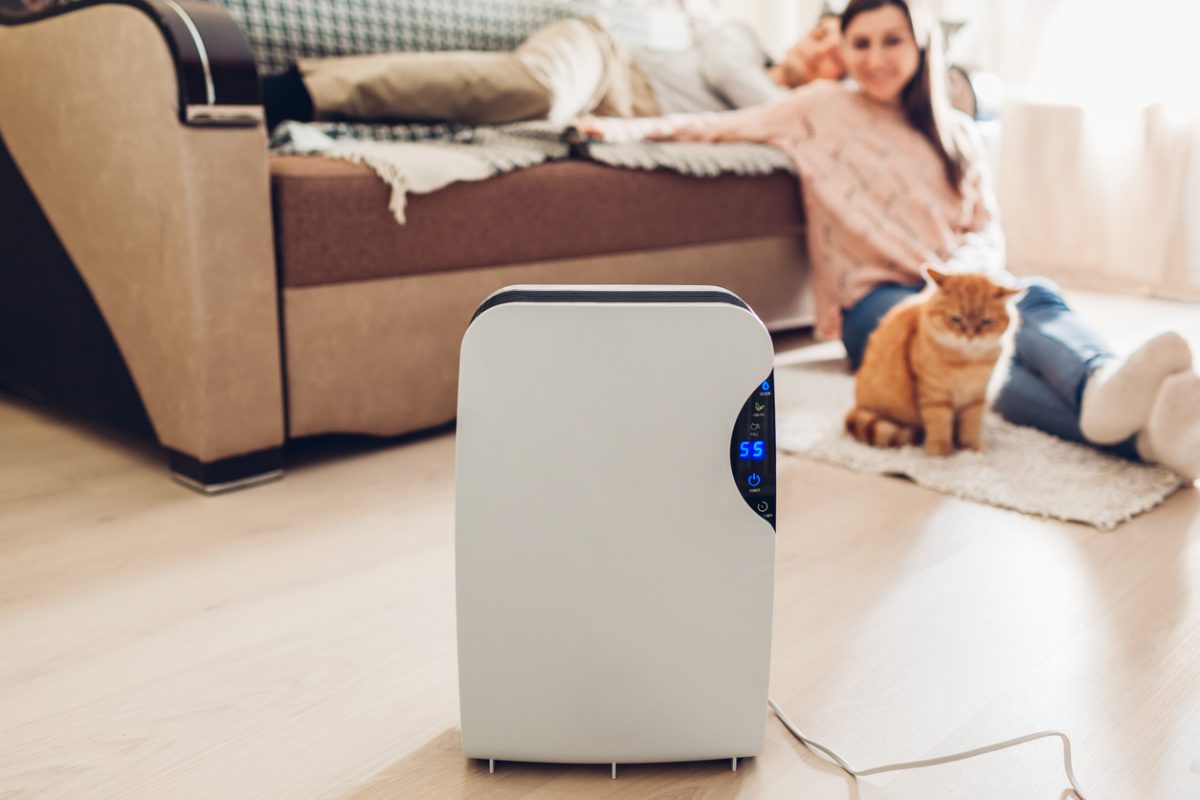Pollen. Dust. Animal dander. Viruses and bacteria. The pollutants that affect indoor air quality are often too small to see, but the effects they can have on your health and wellness can quickly become too big to ignore. Spring and the pollen it brings is enough to make allergy sufferers think more about the air they’re breathing. But there are plenty of indoor air pollutants that should concern you even if you don’t have seasonal allergies. Those include wildfire smoke, PM 2.5 and microbiological pollutants like viruses, bacteria and mold.
Air cleaners have long been a trusted way for households to reduce pollutants like smoke, pollen and dust. Their potential role in filtering viruses from the air has been a hot topic of discussion since the COVID-19 pandemic began in 2020. The U.S. Environmental Protection Agency has said air cleaners could be part of a plan to reduce the risk of viral transmission indoors. And AHAM, after a year and a half of work by leading air cleaner manufacturers, public health professionals and academic researchers, has published the first official industry standard that allows manufacturers to test air cleaners’ ability to remove microbiological pollutants, including viruses, bacteria and mold.
Improving indoor air quality is part of keeping a healthier home environment. The U.S. Environmental Protection Agency estimates indoor air may contain two to five times the amount of pollutants as outdoor air. No room air cleaner will remove all pollutants, but they can help you reduce indoor contaminants and allergens and make your home environment more comfortable in a time when many are placing new emphasis on staying healthy.

The right choice for cleaner indoor air
Many air cleaners can be purchased online. A little research in advance can help you learn what you need so you can avoid inconvenient online returns and unnecessary trips to the store. Take a measurement of the room where the air cleaner will primarily be used, and look for models rated for that room size. Enter the square footage into the AHAM Verifide® Air Cleaner Directory for a list of models appropriate for that room size. Each listing will also carry the manufacturer’s name, along with the air cleaner’s CADR – Clean Air Delivery Rate – showing its ability to filter tobacco smoke, dust and pollen.
Why you should trust CADR: Air cleaner models are assigned their CADR (Clean Air Delivery Rate) based on the results of rigorous testing conducted by independent laboratories. During testing, the air cleaners are exposed to specific quantities of tobacco smoke, dust and pollen. After the air cleaner is run for a certain duration, the amount of each pollutant in the air is measured. The higher the CADR, the greater its ability to remove that specific pollutant.
Stay within models tested for the size of the room or rooms in which the air cleaner will be used. Choosing one rated for a larger room may use unnecessary energy and generate excess noise.
Staying healthy
In the midst of the coronavirus pandemic, many health-related conversations focus on avoiding the virus. It is important to understand that air cleaners are not tested in the AHAM program for the ability to filter and remove viruses. However, in regards to indoor air quality, approximately 20 percent of people suffer from allergy symptoms, and air cleaners can contribute to your overall health by helping you manage those symptoms.
Some allergists regularly recommend that their patients use air cleaners to reduce their allergy symptoms, based on their ability to remove common household pollutants like dust, smoke and pollen and outside pollution particles, known as PM 2.5. Dust, smoke, and pollen can trigger symptoms like cough, wheezing and asthma. PM 2.5 is a significant enough issue for those with breathing difficulties that it is tracked in air quality reports and monitored by the EPA. PM 2.5 is a serious concern in areas affected by wildfire smoke. People living in those areas often rely on air cleaners to mitigate the effects of smoke on indoor air during wildfire season.
Other tips for healthy indoor air
Once you have an air cleaner, run it continuously to maximize its effectiveness. If it is in the bedroom, place it at the height of the bed. Position the air cleaner near the center of the room so air circulation isn’t blocked by a wall.
Other appliances can also help improve indoor air quality. Vacuum carpets and rugs regularly to remove pollutants that may have settled there. Keep your windows closed, wash your hands and turn your ventilation hood on when you cook.


